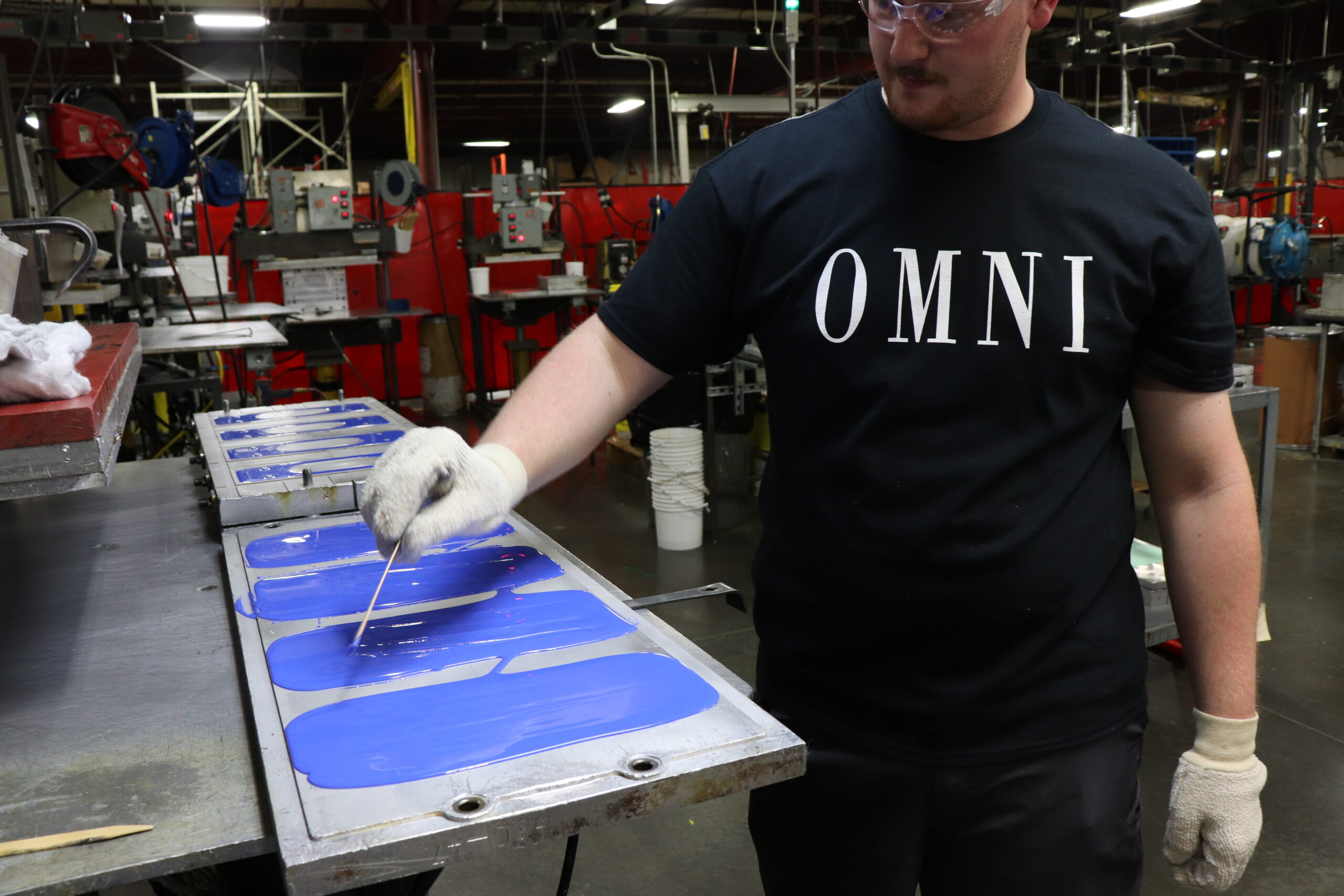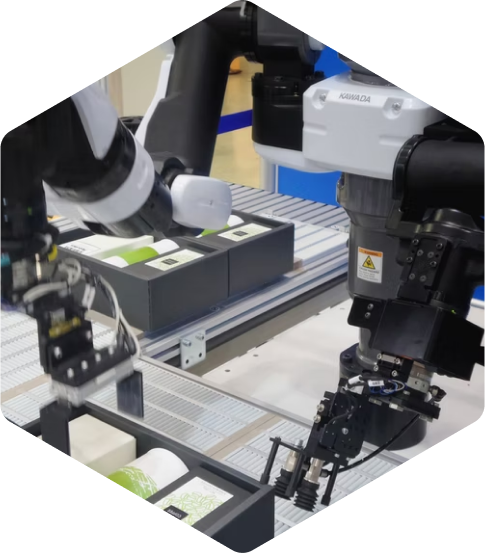Plastics are everywhere, from household items to critical industrial components. To ensure their longevity and performance, it’s crucial to understand how plastic parts age.
Basics of Plastic Materials
Plastics come in various types, each with unique properties. Whether it’s the flexibility of polyethylene or the durability of polycarbonate, understanding these basics helps predict how your custom plastic components will age.
When developing your custom component, lifespan is often a critical factor, especially when selecting the type of plastics and any additives needed for fabrication. An experienced OMNI designer and engineer can walk you through polymer selection, helping you ensure that your custom components meet the life expectancy desired.
Common Aging Issues
As plastics age, the degradation that occurs can impact their functionality and aesthetics, even if high-quality materials are used in the production of molded parts. Understanding these common aging issues is crucial for addressing potential challenges and implementing effective maintenance strategies.
Degradation
Plastics can undergo degradation due to exposure to environmental factors such as sunlight, heat, and moisture. This degradation may result in a loss of material properties and corrosion of the plastic, impacting the plastic’s strength, flexibility, and overall performance. Corrosion does not look like rust which is common in metals. It often manifests as a gradual breakdown of molecular chains, leading to changes in texture and color.
Chemical Changes
Exposure to chemicals, whether in the form of cleaning agents or environmental pollutants, can trigger chemical changes in plastics. This can alter the composition of the material, affecting its stability and resistance to external factors. Chemical changes may result in discoloration, reduced durability, and a shift in mechanical properties.
Cracking
Cracking is a common issue in aging plastics, especially when subjected to mechanical stresses. These cracks can compromise the structural integrity of the material, potentially leading to catastrophic failures. Understanding the conditions that contribute to cracking, such as inadequate material selection or part design is vital for preventing structural issues and ensuring the longevity of plastic components.
Warping
Uneven mechanical stresses and lack of temperature control resulting in fluctuations in temperature can cause plastics to warp over time. Warping results in distortions in shape, impacting the fit and function of plastic parts. This issue is particularly significant in applications where precision and dimensional stability are critical, such as automotive components or electronic devices.
Brittleness
Aging plastics may become increasingly brittle, losing their original flexibility. This brittleness makes the material more prone to fractures and breakages, impacting the overall reliability of plastic components. It’s crucial to identify the factors contributing to brittleness and take preventive measures to maintain the desired mechanical properties.
Improper Manufacturing Processes
Improper manufacturing processes can significantly contribute to aging issues in plastic components, leading to a range of structural, chemical, and performance-related problems. The manufacturing phase plays a critical role in determining the quality and longevity of plastic parts.
Inadequate Material Selection and Manufacturing Forms
Choosing the wrong type of plastic for a specific application can result in premature aging. If the selected material lacks the necessary resistance to environmental factors or does not meet the mechanical requirements of the application, the plastic parts may degrade more rapidly.
Additives such as UV stabilizers play a crucial role in protecting plastics from degradation caused by sunlight. Improper mixing or insufficient quantities of UV stabilizers during manufacturing can compromise the material’s ability to resist UV-induced aging, leading to discoloration, embrittlement, and other issues.
In addition, poor mold design or improper mold tooling for the method of production can result in sub-par final products. Manufacturers can reduce these complications by ensuring their operating conditions are consistent with industry standards, as well as performing mold maintenance or replacements when necessary for high-volume production runs.
Poor Quality Control
Inconsistent manufacturing processes can lead to variations in the finished plastic parts. Variability in factors such as molecular weight, composition, or additives can result in molding defects that have to be classified and accounted for in the processing parameters to ensure each part meets OMNI’s strict quality criteria. This prevents some parts from failing faster than others, eliminating unpredictable performance and shorter-than-expected component lifespans.
Improper molding processes, controls, and poor designs can introduce stress risers in plastic parts. High-stress points, especially at corners, can accelerate the fatigue, leading to issues such as cracking, warping, and structural failure. Uncut flash from molded plastic parts can result in further wear and tear on the part during its lifespan. Not following specific cycle times for production cycles or creating products without considering plastic tolerances can also contribute to manufacturing practices with poor quality control.
Selecting improper or substandard manufacturing processes or partners can be cost-effective in the short term, but more often than not, will result in prematurely aged plastic components, reducing the lifespan of the component.
Methods of Assessing Aging/Degradation
Understanding how plastics degrade requires a combination of rigorous testing methods and real-world observations. By employing accelerated aging tests and delving into real-world case studies, we can unravel the intricacies of plastic aging, enabling us to take proactive measures through predictive maintenance.
Strategies for Prolonging Longevity
Ensuring the enduring performance and longevity of plastic parts involves a thoughtful integration of strategic approaches. From meticulous material selection to mindful design considerations and proactive maintenance, a combination of these strategies contributes to maximizing the lifespan of these essential components.
Choosing the Right Plastic
Selecting the optimal plastic for a particular application is paramount. Understanding the specific environmental conditions, mechanical stresses, and durability requirements helps in choosing a plastic with the right properties. This includes considerations for UV resistance, chemical stability, and mechanical strength tailored to the intended use.
In addition, a thorough evaluation of available plastics ensures that the chosen material aligns with the demands of the application. Engineers must assess properties such as thermal stability, moisture resistance, and compatibility with other materials to make informed decisions that set the foundation for prolonged durability.
Design Considerations
Thoughtful design plays a pivotal role in reducing stress concentrations within plastic components. Techniques such as rounded corners, gradual transitions, and appropriate fillets and radii help distribute mechanical stress evenly. By minimizing stress concentrations, the risk of issues like cracking, warping, and structural failure is significantly diminished.
Performing Regular Maintenance
While regular maintenance for your custom plastic components can seem unnecessary, it can make the difference between premature aging and replacement, and a long lifespan for your plastic parts. Conducting routine inspections is fundamental to identifying potential issues before they escalate. Regular assessments of plastic components for signs of wear, degradation, or damage enable timely interventions, preventing further deterioration.
Proper cleaning procedures and maintenance routines play a crucial role in preserving the appearance and functionality of plastic parts. Avoiding harsh cleaning agents, utilizing appropriate lubricants, and adhering to manufacturer-recommended care guidelines contribute to long-term component health.
Addressing aging signs promptly through proactive repairs is essential. Strengthening weakened areas, and replacing worn-out components are proactive measures that prevent further degradation and extend the overall lifespan of plastic parts.
Choose OMNI For Your Custom Plastic Components
When it comes to custom plastic components, the materials and processes used can significantly affect the product’s performance and lifespan. At OMNI, we excel in selecting the right materials, thoughtful design, and proactive maintenance. Our commitment to quality ensures that the plastic components we deliver are durable and high-performing.
Trust OMNI for custom plastic components that stand the test of time. Fill out our project request form to learn more about how we can craft high-quality plastic components for your OEMs or packaging machinery.


